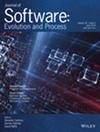期刊缩写:
IET Biom.
影响因子:
1.8
ISSN:
print: 2047-4938
on-line: 2047-4946
on-line: 2047-4946
研究领域:
COMPUTER SCIENCE, ARTIFICIAL INTELLIGENCE
创刊年份:
2012年
h-index:
19
自引率:
0.00%
Gold OA文章占比:
75.93%
原创研究文献占比:
97.37%
SCI收录类型:
Science Citation Index Expanded (SCIE) || Scopus (CiteScore) || Directory of Open Access Journals (DOAJ)
期刊官网:
期刊介绍英文:
The field of biometric recognition - automated recognition of individuals based on their behavioural and biological characteristics - has now reached a level of maturity where viable practical applications are both possible and increasingly available. The biometrics field is characterised especially by its interdisciplinarity since, while focused primarily around a strong technological base, effective system design and implementation often requires a broad range of skills encompassing, for example, human factors, data security and database technologies, psychological and physiological awareness, and so on. Also, the technology focus itself embraces diversity, since the engineering of effective biometric systems requires integration of image analysis, pattern recognition, sensor technology, database engineering, security design and many other strands of understanding.
The scope of the journal is intentionally relatively wide. While focusing on core technological issues, it is recognised that these may be inherently diverse and in many cases may cross traditional disciplinary boundaries. The scope of the journal will therefore include any topics where it can be shown that a paper can increase our understanding of biometric systems, signal future developments and applications for biometrics, or promote greater practical uptake for relevant technologies:
Development and enhancement of individual biometric modalities including the established and traditional modalities (e.g. face, fingerprint, iris, signature and handwriting recognition) and also newer or emerging modalities (gait, ear-shape, neurological patterns, etc.)
Multibiometrics, theoretical and practical issues, implementation of practical systems, multiclassifier and multimodal approaches
Soft biometrics and information fusion for identification, verification and trait prediction
Human factors and the human-computer interface issues for biometric systems, exception handling strategies
Template construction and template management, ageing factors and their impact on biometric systems
Usability and user-oriented design, psychological and physiological principles and system integration
Sensors and sensor technologies for biometric processing
Database technologies to support biometric systems
Implementation of biometric systems, security engineering implications, smartcard and associated technologies in implementation, implementation platforms, system design and performance evaluation
Trust and privacy issues, security of biometric systems and supporting technological solutions, biometric template protection
Biometric cryptosystems, security and biometrics-linked encryption
Links with forensic processing and cross-disciplinary commonalities
Core underpinning technologies (e.g. image analysis, pattern recognition, computer vision, signal processing, etc.), where the specific relevance to biometric processing can be demonstrated
Applications and application-led considerations
Position papers on technology or on the industrial context of biometric system development
Adoption and promotion of standards in biometrics, improving technology acceptance, deployment and interoperability, avoiding cross-cultural and cross-sector restrictions
Relevant ethical and social issues
CiteScore:
| CiteScore | SJR | SNIP | CiteScore排名 |
|---|---|---|---|
| 5.9 | 0.583 | 0.957 | 学科 排名 百分位 大类:Computer Science 小类:Signal Processing 41 / 131 69% 大类:Computer Science 小类:Computer Vision and Pattern Recognition 34 / 106 68% 大类:Computer Science 小类:Software 143 / 407 64% |
发文信息
中科院SCI期刊分区
2025年3月20日发布
| 大类 | 小类 | TOP期刊 | 综述期刊 |
|---|---|---|---|
| 4区 计算机科学 | 4区 计算机:人工智能 COMPUTER SCIENCE, ARTIFICIAL INTELLIGENCE | 否 | 否 |
2023年12月发布
| 大类 | 小类 | TOP期刊 | 综述期刊 |
|---|---|---|---|
| 4区 计算机科学 |
4区
计算机:人工智能
COMPUTER SCIENCE, ARTIFICIAL INTELLIGENCE
|
否 | 否 |
WOS期刊分区
| 学科分类 |
|---|
Q3COMPUTER SCIENCE, ARTIFICIAL INTELLIGENCE |
历年影响因子
| 2016年 | 0.7640 |
|---|---|
| 2017年 | 1.3820 |
| 2018年 | 1.8360 |
| 2019年 | 2.0920 |
| 2020年 | 2.5880 |
| 2021年 | 2.7160 |
| 2022年 | 2.0000 |
| 2023年 | 1.8000 |
| 2024年 | 1.8000 |
历年发表
| 2012年 | 22 |
|---|---|
| 2013年 | 27 |
| 2014年 | 40 |
| 2015年 | 30 |
| 2016年 | 55 |
| 2017年 | 71 |
| 2018年 | 70 |
| 2019年 | 40 |
| 2020年 | 38 |
| 2021年 | 61 |
| 2022年 | 46 |
投稿信息
出版周期:
Bi-monthly
出版语言:
English
出版国家(地区):
USA
审稿时长:
33 weeks
出版商:
Wiley
编辑部地址:
WILEY, 111 RIVER ST, HOBOKEN, USA, NJ, 07030-5774
IET Biometrics - 最新文献
Masked Face Recognition Based on ConvNeXt With Coordinate Attention and AdaCos Loss
Pub Date : 2025-09-17 DOI: 10.1049/bme2/8878553 Chaoying Tang, Yanbin Cui, Qiaoyue HuangID3: Identity-Driven Learning Based on 3D Reconstruction and Frame-Level Residual Enhancement for Deepfakes Detection
Pub Date : 2025-09-12 DOI: 10.1049/bme2/3764746 Hui Ma, Jin Zhang, Xihong Chen, Wenhao Chu, Jiabao Guo, Junze Zheng, Liying Yang, Yanyan LiangA DeepConvLSTM Approach for Continuous Authentication Using Operational System Performance Counters
Pub Date : 2025-08-26 DOI: 10.1049/bme2/8262252 César H. G. Andrade, Hendrio L. S. Bragança, Horácio Fernandes, Eduardo Feitosa, Eduardo Souto
免责声明:
本页显示期刊或杂志信息,仅供参考学习,不是任何期刊杂志官网,不涉及出版事务,特此申明。如需出版一切事务需要用户自己向出版商联系核实。若本页展示内容有任何问题,请联系我们,邮箱:info@booksci.cn,我们会认真核实处理。
本页显示期刊或杂志信息,仅供参考学习,不是任何期刊杂志官网,不涉及出版事务,特此申明。如需出版一切事务需要用户自己向出版商联系核实。若本页展示内容有任何问题,请联系我们,邮箱:info@booksci.cn,我们会认真核实处理。








